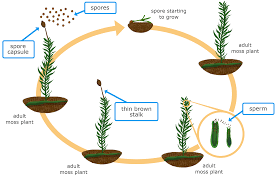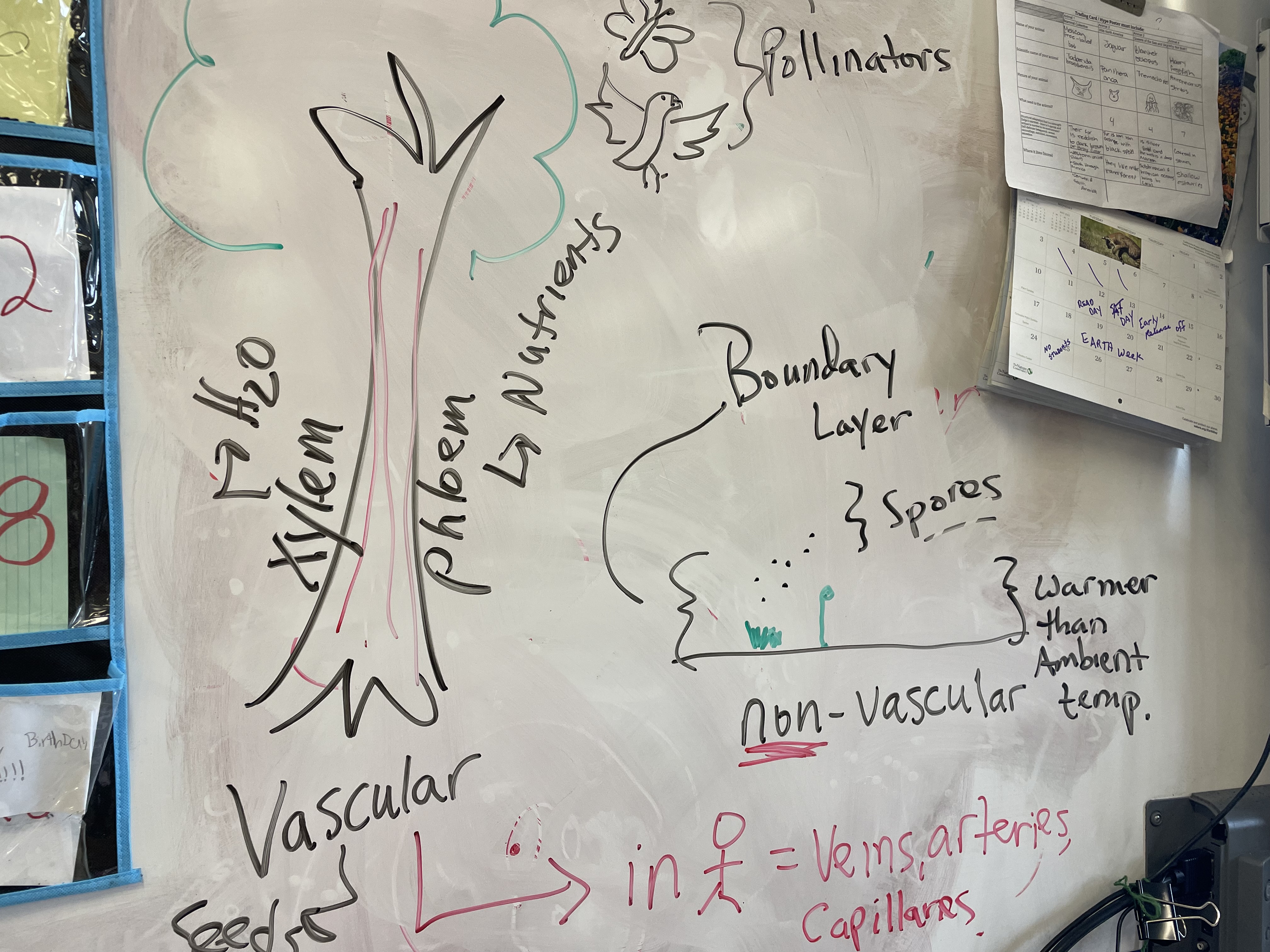1. Watch the above videos and take notes. You will be making your own mini moss terrarium.
2. Take notes on the moss lifecycle from the image below (draw it out). Included should also be the notes on the difference between vascular and non-vascular plants found below.
3. Begin your lab report by referencing the instructions below. Your report should be neat and organized.
Title, Purpose, Materials, Procedure, Data, Conclusion.
Title - Something to do with what you are doing.
Purpose- What are you investigating and learning about?
Materials- What will you be using?
Procedure- Draw out and label what you do or write it out. Where are you obtaining your resources? Be specific about what you did. Temperature, time of day, location, what is near where you collected the specimen.
-
IMPORTANT!!! Once you have your moss jar set up you are not to open it. Opening it will compromise the investigation and also you could be exposing yourself to pathogens.
Data: ----> You should have a chart to put your data in. On the top of the chart should be the headings; date, observations, drawings.
- You should document your data in a chart every day that you are in class. Do not put nothing happened. Each day observe and document. You should be using a hand lens to see more clearly. You may document by taking pictures also but that is an extra.
- Always record the date.
- Make sure to document what you did the first day.--> Temp outside, location of moss, what was it near?, what was the weather at the time?
- Each day document what is happening with the moss, with the water in the jar, and anything else that may appear different.
- You should be taking measurements of the moss to document if it is growing.
- You are watching for the sporophyte stage. (see the moss life cycle which should be in the notes portion of the lab.)
Conclusion- See below for what you should include (Diving Deeper).
- Explain your data using the moss life cycle below. What has happened to the moss? You dhould use the vocabulary from the life cycle.
- Summarize your notes from the videos and notes and explain how they applied to the investigation.
- Reflect on your purpose and if it was achieved.
- Discuss whether you were successful and explain why or why not.
- Make sure you have it all organized.
This lab adapted from here.
 This is the lifecycle of moss and ferns. Both are non-vascular plants.
This is the lifecycle of moss and ferns. Both are non-vascular plants.
Watch the below videos to get started. Write down important things about making your terrarium. Remember when doing a lob or investigation you should take notes first.
How to make moss graffiti. - Let me know if you would like to try this!!
The below information should be in your notes. Notes are research for what you are investigating.

What You’ll Need:
For the Indoor Moss Terrarium
● Glass jar
● Plastic Wrap or the lid of jar.
● Rubber Band if you do not have the lid.
● Charcoal (optional/best results)
● Small pebbles
● cloth or mesh (window screening,
landscape fabric, cheesecloth,
gauze or sock material will do)
● Dirt (can be collected with moss or
use potting soil)
● Moss
● Water (squirt bottle works best)
● Toys or rocks to decorate the
ecosystem (optional)
How to Start:
Collect moss from outside. There are many varieties of mosses that grow wild in Illinois and
can be found on the ground and on rocks and trees, even in urban areas. Look for the plant
growing in shady and moist areas. You may choose to gather one type of moss or several
types. Once you have collected the plants, store in a plastic bag and spray with water to keep
wet.
Diving Deeper: Things to include in your lab report.
Plant Needs
Moss is a living plant and has many needs in order to survive. What are the needs of a plant like
moss? Where does the moss in your terrarium get its needs? What steps can you take to make
sure that the moss in your terrarium gets all of its needs met?
Water Cycle in Terrariums
Examine your terrarium for signs of the water system at work. Note where you see water in your
jar. Is there condensation accumulating on the sides of the jar and on the lid? Is there some
water pooled in the rock layer of your terrarium? Where might water be lost in this system? How
often do you think you will need to add water to your jar? What is driving the movement of water
in your terrarium? Compare and contrast the water cycle in your terrarium to the global water
cycle.
Vascular vs. Nonvascular Plants
Moss is classified as a nonvascular plant. Grasses, trees, flowers, etc. are all classified as
vascular plants. Compare plant structures found in moss with plant structures found in grass.
How does each plant collect water? How does each plant reproduce? Are both plants able to
perform photosynthesis?
Erosion investigation
Erosion is the geological process in which earth materials like rocks and soil are worn away and
moved by natural forces such as wind or water. The effects of erosion can be harmful, including
the loss of fertile land, increased pollution, and increased flooding. Find an area of bare land
with no plants, an area covered in moss, and an area with larger plants like grass. Pour water
over each of the areas and examine how water moves or is absorbed into the ground at each
location. Which area is able to keep the soil in place the best?